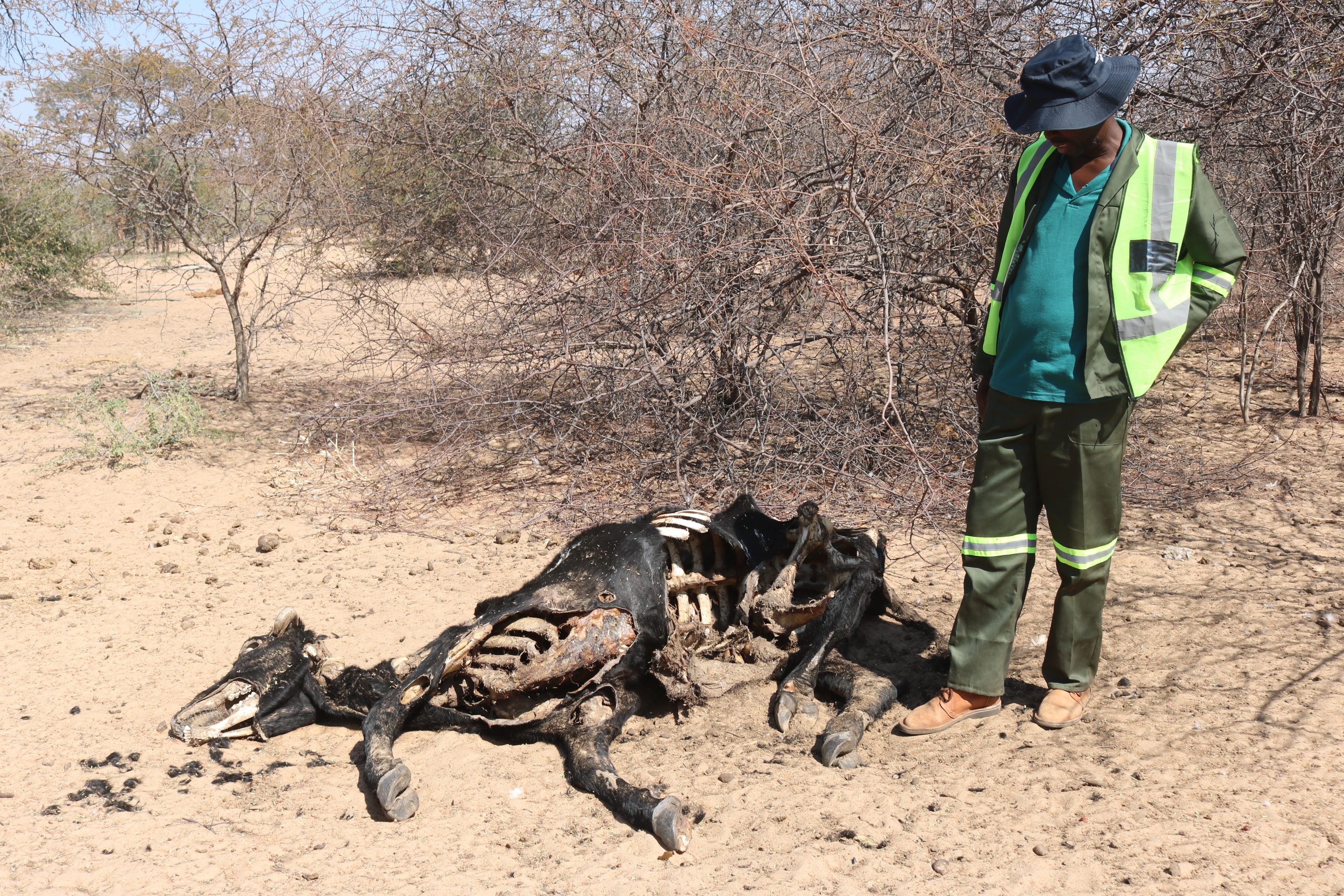Elizabeth Hiyolwa
MANGETTI - The Kavango regional leaders have learnt with shock the extent to which the crisis at Kavango Cattle Ranch has escalated upon their return visit to the farm.
No employees were yet deployed to the posts and the cattle continue to succumb to the lack of care.
On 20 July, New Era reported the sprawling cattle farm in the Kavango West region, under the care of the Namibia Industrial Development Agency (NIDA), has been abandoned with livestock roaming around unattended while infrastructure has deteriorated.
Kavango West Regional Council chairperson Joseph Sikongo was shocked to witness rotten cattle carcasses lying around at a water point, at what seems to be yet another abandoned project in the region while visiting the farm recently.
Reacting to the report, NIDA board chairperson Twapewa Kadhikwa said most parts of the ranch are in good condition and the workers “temporarily vacated” cattle post 40 because an elephant trampled one of their colleagues.
She said the NIDA board, CEO and management visited the farm in October 2020 and December 2021 and “conducted a full assessment of all infrastructure, animals and people and a long-term solution is sought in terms of our strategic plan, which is near completion”. In the statement, she said various remedial measures have been taken, including “restructuring of the farm supervision and management with the new management to assume duty as from 1 August”.
However, the regional leaders claimed that the NIDA management is rather relaxed about the situation, as the lack of employees at the post will just deteriorate.
The leadership visited eight posts, out of the 38 on the ranch, and found 31 carcasses of cattle near water points, of which some were burnt and others left for vultures to feed on.
Fresh elephant dung and footprints were observed, which is evident that they keep visiting the sites and destroying infrastructure by pulling out some water pipes, and destroying water tanks.
Sikongo lashed out at the statement by NIDA, who last week, which disputes the alleged negligence as the cause of death for the cattle at the farm but rather stating that the cattle died due to normal mortality causes.
“The five dead cattle that NIDA released I don’t know where they got it, because I’m at the spot as I’m speaking, this is the truth,” Sikongo vented, adding, “there is no normal mortality here. That was also another lie. These cattle are dying because water is not there.”
NIDA allegedly further disputed that it was not 100 cattle that died but rather only five cattle.
Sikongo, on the other hand, is adamant, saying, “I still maintain my statement I said 100 cattle are dying because we are 800m away from the water point now. If we are to tour the whole farm, you will see. I challenge the CEO to come and count.”
It is believed there are over 10 000 cattle on the farm and about 70 employees.
Sikongo described NIDA as an institution that produces meat for vultures instead of producing meat for the Namibian people or the market to increase gross domestic product (GDP).
He thus urged the line ministry to intervene by getting someone capable of managing the farm successfully, fairly and diligently, as he is confident that NIDA is not the right company to run the farm.
Sikongo said, “it is just a management issue. No one is running this farm on behalf of the State so that the State can generate income and our GDP to increase.”
The chairperson further said the farm cannot be run without petty cash as the procurement process delays the fixing of small things around the farm.
The employees, through the manager, have requested to be paid a danger allowance, yet that was not fulfilled.
Sikongo also said some posts, like Post 28, are too far from where the workers are and there is no fuel for the tractor to drive all the way to bring fodder to the cattle, which are more than 20km away from the settlement.


